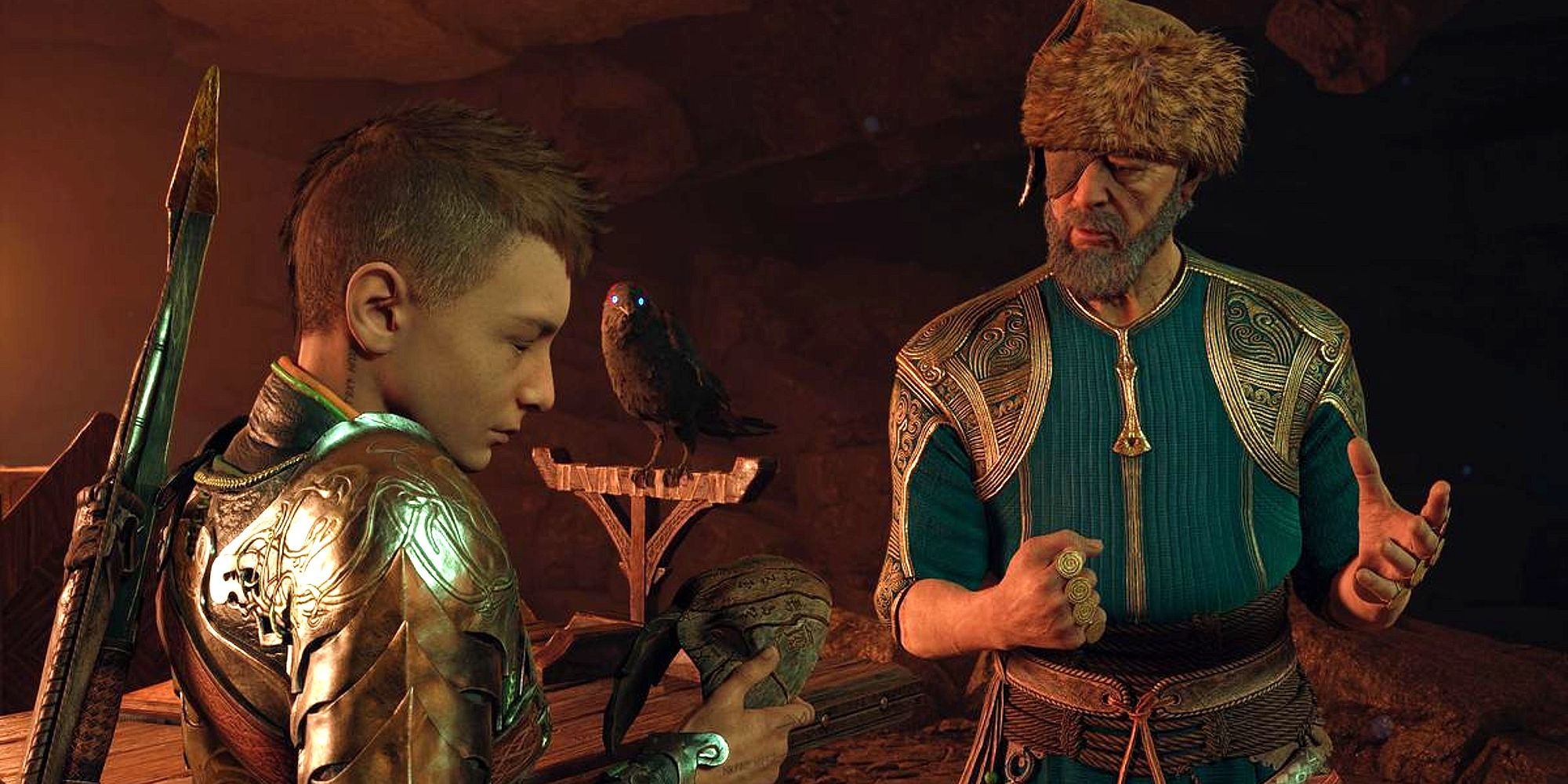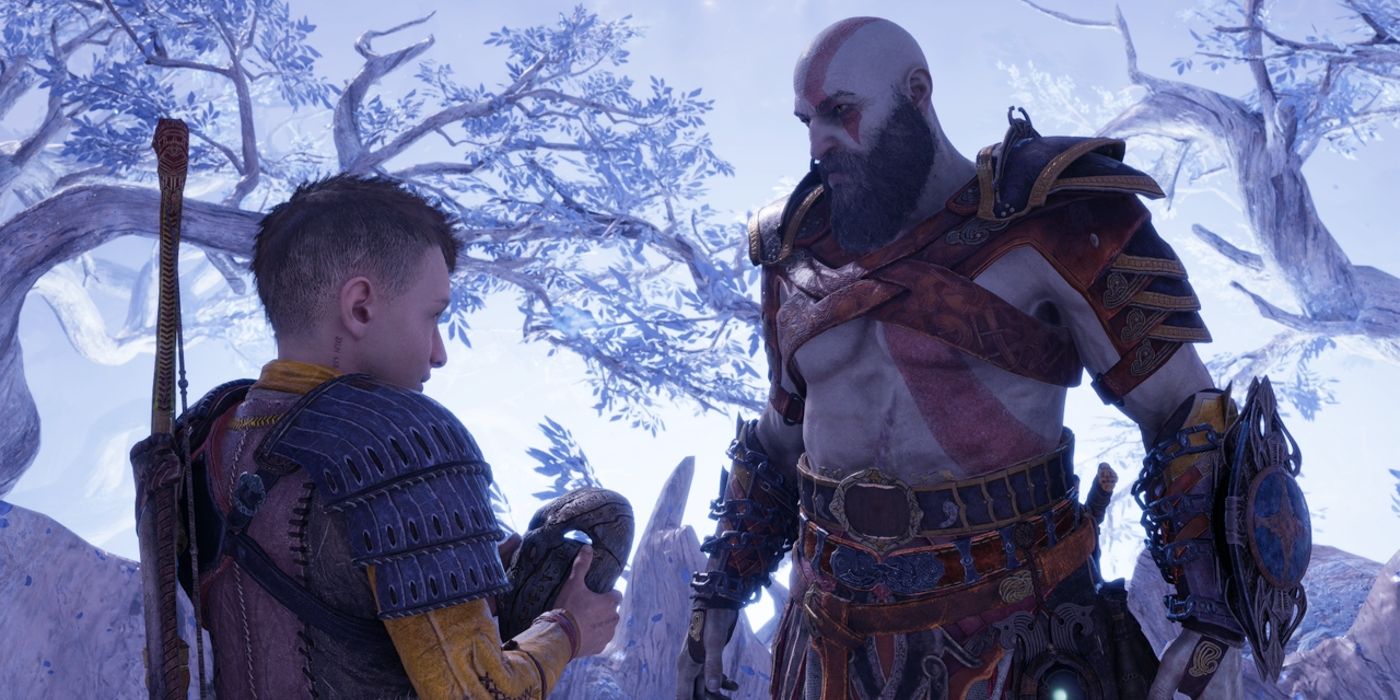God of War Ragnarök’s story is mostly straightforward, but one detail remains puzzling even after the credits roll. The object in question is a mask marked with strange runes that glow. Not even Odin, the so-called god of wisdom, fully comprehends its purpose and only offers speculation. At best, the mask is a tease for future games, but it’s basically just a MacGuffin. Even so, its function in God of War Ragnarok’s plot isn’t consistent, prompting further questions about what it truly does.
[Warning: This article contains story spoilers for God of War Ragnarok.]
When Atreus first reaches Asgard, Odin, the most scheming video game villain, shares his main objective with him. Odin shows Atreus the realm tear that took his eye and part of a mask he believes will allow him to look inside the tear safely. Odin tasks Atreus with finding two other parts of the mask, which are located in Muspelheim and Niflheim. However, in between these locations, Atreus brings the mask to Helheim, believing the final piece to be there. The mask even glows and points to the supposed direction of a missing piece. Ultimately, it leads Atreus to Garm, the massive hellhound. It is never explained why the mask glowed in Helheim despite there not being a missing piece, which raises more questions about the mask's true purpose.
God of War Ragnarök: What Does Odin’s Mask Do?
In God of War Ragnarok, Odin tells Atreus that he found the tear when he was a young god. He sensed knowledge and truth inside, so he peered into it and lost his eye, which is different from actual Norse mythology. Despite the harm it caused, Odin continued to investigate the tear, scouring the nine realms for clues about what it could be or how to get inside. This led to his discovery of part of the mask. It glows the same bright green color in the vicinity of the realm tear, and the light reveals markings on the mask’s front. Atreus has remarkable language skills, so Odin employs him to help figure translate the mask’s runes and find the remaining pieces.
Odin later attempts to get Atreus to put on the mask and look into the mysterious realm tear during God of War Ragnarok’s ending boss fight as if he is afraid to look into himself. This reveals that Odin wasn’t entirely confident in his theory that the mask would allow safe viewing into the tear, and his hesitation was likely wise. There was no evidence that the mask could do so in the first place. The only thing the mask can do for sure is glow when it is in the presence of other mask pieces.
In the case of Helheim, the mask glowed in the direction of Garm, so perhaps it only glows when it is near primordial power, the power with which the universe was created. In addition to being optional locations in God of War, Muspelheim and Niflheim are primordial realms and contain the missing mask pieces. Garm’s age is unknown, but it is one of the most powerful beings in the nine realms, so it stands to reason that its power may come from primordial sources, suggesting that the mask is ancient.
The mask’s age is supported by the words Atreus reads from it, which seem to be Greek, creating a peculiar connection to Kratos’ homeland. Another notable connection comes from Kratos’ vision of Athena in God of War. There are hints of a greenish glow surrounding her, similar to the realm tear and the mask. These details could point toward future plot points that the next God of War games will probably touch on, but, with the lack of definitive evidence, the mask and the realm tear remain mysterious plotholes in God of War Ragnarok.
Source: Playstation/YouTube


